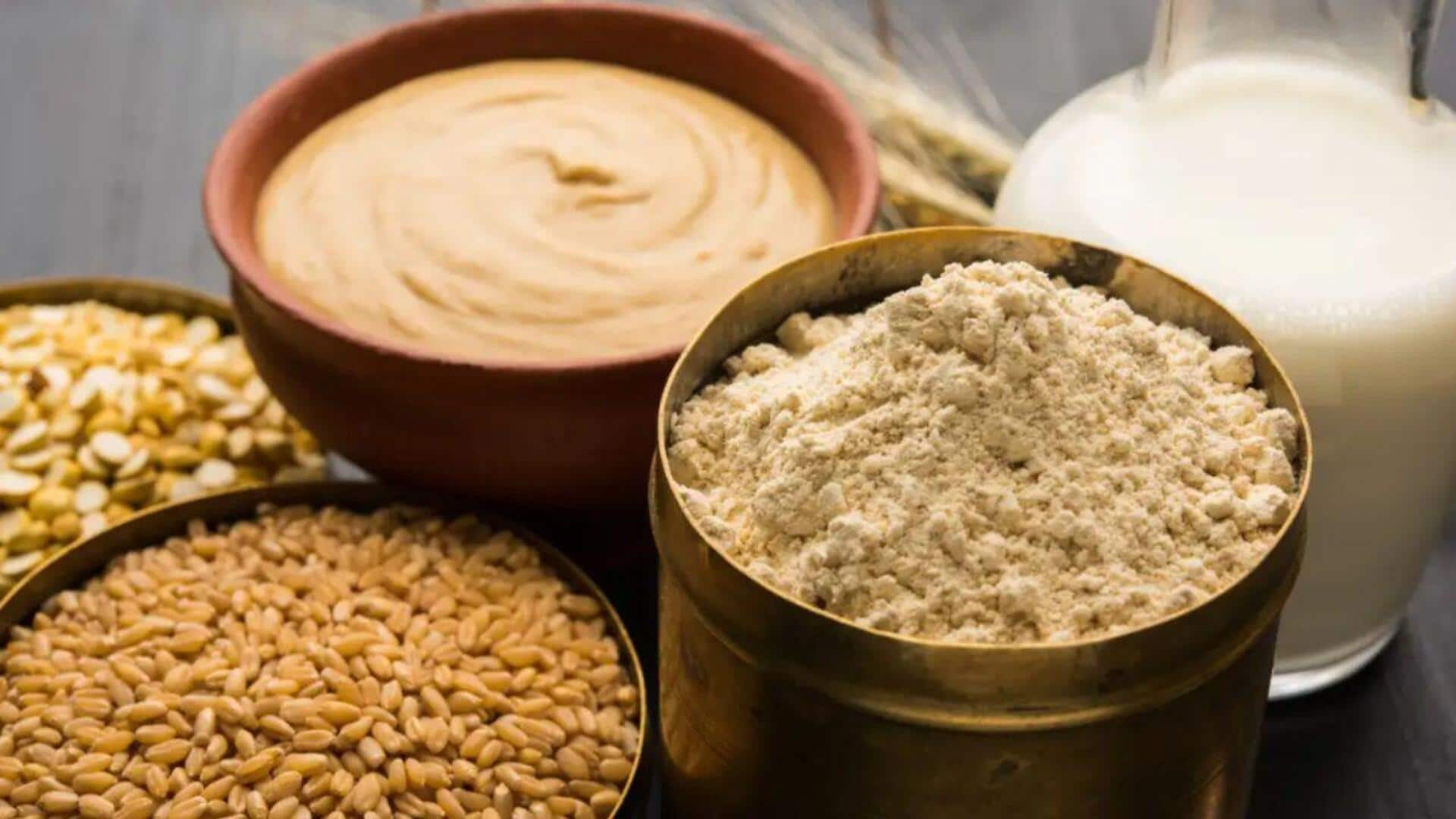
Sattu: India's ancient superfood making a modern comeback
What's the story
Sattu, a finely ground flour made from roasted pulses, has been a staple in many Indian households for centuries. Its journey from ancient kitchens to modern-day superfood status is fascinating. Once a humble ingredient used primarily for its nutritional benefits, sattu has now become popular for its versatility and health advantages. This article delves into the historical significance of sattu and how it evolved over time.
#1
Ancient roots of sattu
Sattu's history dates back to ancient India when it was primarily used as an energy booster for laborers and travelers. The easy-to-carry flour provided essential nutrients and sustained energy during long journeys or hard labor. It was also a part of daily diets in rural areas where fresh produce was scarce.
#2
Nutritional benefits recognized
Over the years, people have started recognizing the nutritional benefits of sattu. Packed with protein, fiber, and essential minerals like iron and magnesium, it makes for a healthy alternative to refined grains. Its low glycemic index makes it an ideal choice for people looking to manage their blood sugar levels.
#3
Versatility in modern cuisine
In recent years, sattu has found its way into modern cuisine as chefs experiment with traditional ingredients in innovative ways. From refreshing drinks like sattu sherbet to savory dishes like stuffed parathas or pancakes, the flour lends a unique flavor profile while boosting the nutritional value of meals.
#4
Economic impact on local farmers
The rising popularity of sattu has also had a positive economic impact on local farmers who grow the required pulses, such as chickpeas and lentils. As demand grows, farmers get better returns on their crops, which helps sustain rural economies across India.